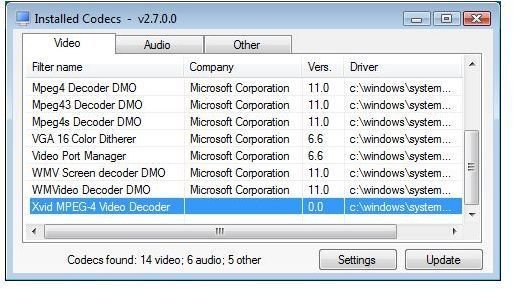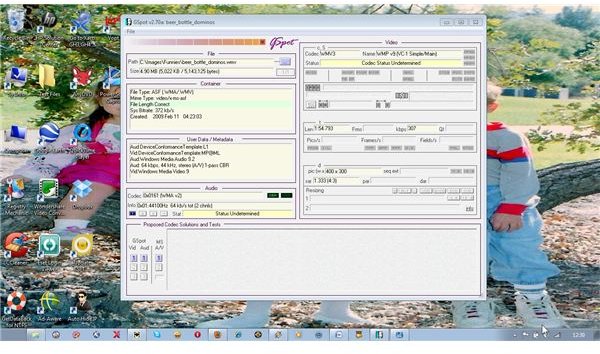Install Missing Windows Media Player Codecs
Downloading and Installing Video Codecs
You’ve just finished downloading that video clip that all of your friends are abuzz about only to find out that it isn’t playing right in Windows Media Player. Either the video display window is a nothing more than a black screen with audio, there is video but no audio, the audio and video aren’t synched properly, or something else is wrong with the playback. Every video file is created using a specific coding process, known as a codec. Without the right codec, the video won’t play properly. You could go out and download a more feature-rich and capable media player, or you could figure out what codec(s) is/are missing on your computer and go download them, if you knew how. Some easy to follow instructions are listed below.
File Types Vs Codecs
Most everyone has seen video files with the three main file type extensions of .mov for Quicktime movies, .mpg for MPEG (Motion Picture Experts Group) and .avi (Audio/Video Interleave). However, there are a few other very popular file types in use these days. There’s the Matroshka file type, designated by the .mkv extension, Real Media Variable Bit Rate files, with .rmvb as the extension, Real Audio, with (usually) .ra, and Shockwave Flash, with .swf. These are some of the various file types in use for video files. And they all need codecs to play them. For example, to obtain slightly better video quality, someone may have encoded that AVI file using the Xvid or Dvix encoders. This means that you’ll need those codecs to play them back. The Matroshka and RMVB formats will also require their own special codecs in order to play them back correctly. Matroshka and RMVB are popular because they allow for more video data coupled with a much smaller file size. This makes sharing these types of files on the Internet much easier.
Determine What Codecs Are Missing

Before you can download any new codecs to fix the problem, you need to know what’s missing. There are a very large number of codecs that video files may be encoded with. You could try a hit and miss philosophy of searching the web for “codecs,” and download and install them all. That’s time consuming and wasteful. The best bet is to find a program that analyzes the video file in question and your system, and tells you what codecs you need to play that video clip. G-Spot is one of the better ones that has been around for a number of years and is distributed on the freeware/shareware licensing model. Another freeware program that also provides links to where you can download the codecs from is called Codec Installer. Which one you choose will be determined by how much assistance you think you need in finding the proper codecs, but my experience has shown that G-Spot is more reliable.
Codec Multi-Packs - Yes or No?
Another option is something of a “one-size-fits-all" solution. There are a few companies (and programmers) out there that have done the hard work of locating a large number of available codecs and putting them all together into a single package. These are known as codec multi-packs. One of the most popular is Shark007, which is a compilation of most of the most popular and prevalent codecs in use on Windows platforms today. One problem with multi-packs though is that sometimes they can cause problems and conflicts with other codecs, especially poorly written ones. Unless the media analyzer you choose tells you you’re missing a gaggle of codecs, you’re better off just installing individual codecs.
Download and Install
You’ve run the video clip through your file analyzer of choice and now you’re ready to download and install the required codec. First, you need to find the codec. One of the most popular I’ve found is ffshow, so this example will use ffshow. First, you need to find it. Go to Google and enter “ffshow” for your search term, or find a site dedicated to free codec distribution, such as codecs.com. Locate the codec you need and click on it. Once it’s downloaded, browse to your downloads folder and double-click the installation package (in Vista/Win7: right click and Run as Administrator). A well-written installer will do the rest for you. Most people should leave the default installation options alone. One thing to note, is that some codecs need you to know whether your operating system is 32-bit or 64-bit, so you need to find this out beforehand (Control Panel->System Information).
Once you’ve gotten all the codecs you need downloaded and installed, it’s time to go watch that clip and join the discussion of it!
References
Source: Author’s personal experience
Screenshots provided by author and Codec Installer.
